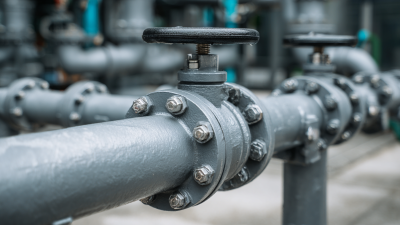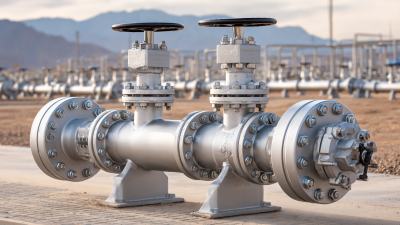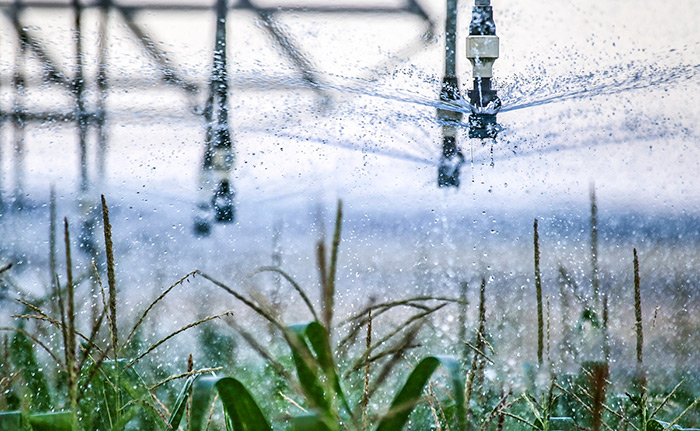How to Choose the Right Pvc Union Valve for Your Industrial Needs Based on Performance Data
Table of Contents
- Understanding the Basics of PVC Union Valves and Their Applications
- Key Performance Metrics to Evaluate When Selecting PVC Union Valves
- Comparative Analysis of Different PVC Union Valve Types and Their Benefits
- Assessing Durability and Reliability in Performance Data for PVC Union Valves
- Considerations for Sizing and Compatibility of PVC Union Valves in Industrial Systems
- Best Practices for Maintaining Optimal Performance of PVC Union Valves
- Enhancing Fluid Control: Insights from Industry Reports on PVC Single Union Ball Valve with Blue Handle Efficiency and Market Trends
- FAQS
- Conclusion
- Related Posts
You know, in the industrial world, picking the right components is a big deal—especially when we're talking about valves. One piece that really stands out is the PVC Union Valve. It’s super important because it helps connect different parts of your piping system and makes maintenance way easier.

When you're choosing one, you’ve gotta think about a few key things—like pressure ratings, temperature limits, and whether it’s compatible with the chemicals you’re handling.
At Ningbo Pntek Technology Co., Ltd., we’ve been in the game for over ten years, dealing with plastic pipes, fittings, and valves. We totally get how critical it is to pick the right PVC Union Valve for your specific needs. With our experience, we can help you pick a valve that not only does the job but also lasts longer and keeps your system running smoothly.
Trust us, getting the right one can really make a difference!
Understanding the Basics of PVC Union Valves and Their Applications
 PVC union valves might not be the most glamorous thing out there, but they're honestly
pretty crucial in a ton of industrial setups. They provide a
reliable way to connect piping systems without too much hassle. If you’re trying to figure out
which valve to go for, it helps to get a basic idea of how they work —
trust me, it makes the whole selection process a lot easier. These valves are
designed to be super easy to install and take apart, which is a lifesaver if you need to do
repairs or swaps on the fly. Plus, they're lightweight and resistant to rust and corrosion,
making them perfect for transporting all kinds of fluids — especially in chemical processing
or water treatment plants.
PVC union valves might not be the most glamorous thing out there, but they're honestly
pretty crucial in a ton of industrial setups. They provide a
reliable way to connect piping systems without too much hassle. If you’re trying to figure out
which valve to go for, it helps to get a basic idea of how they work —
trust me, it makes the whole selection process a lot easier. These valves are
designed to be super easy to install and take apart, which is a lifesaver if you need to do
repairs or swaps on the fly. Plus, they're lightweight and resistant to rust and corrosion,
making them perfect for transporting all kinds of fluids — especially in chemical processing
or water treatment plants.
At Ningbo Pntek Technology Co., Ltd., we’re all about providing
top-notch plastic pipes, fittings, and valves
that match a wide range of industrial needs. With over ten years of experience exporting worldwide,
we really get how important it is to have solid performance data when choosing the right
PVC union valve. Our huge product lineup ensures that you’ll find something that fits your system
perfectly and helps make your operations more efficient and
budget-friendly. Whether you’re working on residential projects,
commercial setups, or heavy-duty industrial stuff, we’re here to help you find solutions
that boost your productivity and keep things running smoothly.
Key Performance Metrics to Evaluate When Selecting PVC Union Valves
When you're choosing PVC union valves for industrial projects, it’s really important to focus on a few key factors to make sure you get the right fit. Things like pressure rating, temperature range, and how the flow moves through the valve are pretty much the main points you don’t want to overlook. For example, the pressure rating tells you the max pressure the valve can handle—crucial for keeping everything safe and running smoothly. Then there’s temperature tolerance, which shows whether the valve can handle the environment it’ll be working in. And don’t forget about flow characteristics, especially the Cv value—this little number affects how efficiently your piping system works and how well it performs overall.
Lately, industry updates have shown just how important this data is. Take those advanced rising-stem ball valves, for instance—they’re being used in some big projects because they’re reliable and super easy to maintain. They really highlight how careful engineering can meet really complex industrial needs. At Ningbo Pntek Technology Co., Ltd., we’ve got over ten years of experience with plastic pipes, fittings, and valves. We’re here to help our clients make smart choices, making sure the PVC union valves they pick actually match their operational needs and boost their system's performance.
Performance Metrics for PVC Union Valves
This chart illustrates key performance metrics for PVC union valves, including Flow Rate, Pressure Rating, and Temperature Resistance. These metrics are crucial for selecting the right valve based on your industrial needs.
Comparative Analysis of Different PVC Union Valve Types and Their Benefits
When you're trying to pick the right PVC union valve for industrial use, it’s pretty important to understand the differences and benefits of the various types out there. PVC union valves are pretty popular because they're lightweight and resistant to corrosion, which makes them perfect for dealing with harsh chemicals or humid environments. Recent research has shown that PVC and PE piping systems actually beat traditional materials like concrete or iron when it comes to being eco-friendly and durable. This just emphasizes how vital it is to choose a valve that matches these modern advancements.
If you do a bit of a side-by-side comparison of different valve types, you’ll notice that some PVC union valves provide better flow performance. This means less energy wasted and more efficiency when moving fluids. For example, certain designs help cut down turbulence and pressure drops—crucial factors in systems like biogas plants where fluid integrity really matters. Plus, PVC’s ability to handle a range of temperatures and pressures makes it super versatile, fitting well with industries pushing toward sustainability. That’s why investing in quality PVC systems often makes a lot of sense.
As someone who's been in the game for over ten years, Ningbo Pntek Technology Co., Ltd. offers a wide selection of PVC valves made to meet the needs of industries aiming for both efficiency and eco-friendliness. Thanks to ongoing data and performance tracking, professionals can feel confident making choices that balance operational effectiveness with environmental responsibility.
Assessing Durability and Reliability in Performance Data for PVC Union Valves
When you're picking out a PVC union valve for industrial use, it's pretty important to look beyond just the technical specs. You really want to get a sense of how tough and reliable the valve is, which you can often tell from performance data. The durability mostly depends on the quality of the materials and how the valve is built—like, a valve made with high-quality PVC and solid joints is likely to handle higher pressures and even harsh chemicals better. And don’t forget to check out test results from various operating conditions—they give you a good idea of how the valve will hold up over time.
Reliability’s also a big deal, especially since it directly affects how smoothly your processes run. Looking into failure rates, maintenance needs, and lifespan info from the performance reports can help you spot valves that are consistently up to the task. Plus, reading through user reviews or case studies can give you real-world insights—like, how have these valves performed in similar setups? When you take all these factors into account, you’re better equipped to choose valves that are built to last and reliable enough to keep things running without a hitch, even in tough environments.
How to Choose the Right PVC Union Valve for Your Industrial Needs Based on Performance Data - Assessing Durability and Reliability in Performance Data for PVC Union Valves
| PVC Union Valve Model | Diameter (inches) | Max Pressure (psi) | Temperature Range (°F) | Durability Rating (Cycles) | Weight (lbs) | Material Certification |
|---|---|---|---|---|---|---|
| Model A | 1.5 | 150 | 32 - 140 | 5000 | 2.5 | ISO 9001 |
| Model B | 2 | 200 | 40 - 150 | 6000 | 3.0 | ASTM D1784 |
| Model C | 3 | 100 | 30 - 120 | 4000 | 4.5 | NSF/ANSI 61 |
| Model D | 4 | 250 | 60 - 180 | 7000 | 5.5 | ISO 4047 |
| Model E | 5 | 300 | 70 - 200 | 8000 | 7.0 | FDA Compliant |
Considerations for Sizing and Compatibility of PVC Union Valves in Industrial Systems
When you're picking PVC union valves for industrial setups, sizing and making sure they fit right are pretty much your top priorities. A report from the Industrial Valve Market Research back in 2022 mentioned that getting the right size can actually boost flow efficiency by around 15%. That’s a big deal because it means saving on energy costs and keeping things running smoothly. If the valve is too big or too small, it might cause pressure drops or leaks—that can spell major trouble and even lead to costly downtime. So, it’s really worth taking the time to get that right.
And don’t forget about compatibility—that’s just as important. The PVC Pipe Association did a study showing that mismatched materials or valve specs can cause early failures or even safety issues. For example, using a valve rated for high pressure in a low-pressure system might seem like overkill, but the opposite—using a low-rated valve in a high-pressure setup—can be downright dangerous and mess up the system’s integrity. Basically, you’ve gotta weigh the specific needs of your operation and check out the performance data of different PVC union valves to make smart, informed choices that match your goals.
Best Practices for Maintaining Optimal Performance of PVC Union Valves
When it comes to keeping PVC union valves running smoothly, sticking to some good practices can really make a difference in how long they last and how well they perform. For instance, doing regular inspections—say, every 6 to 12 months—can help catch issues like wear, leaks, or minor damages before they turn into costly problems or cause downtime. The Fluid Control Institute mentions that with proper maintenance, you could actually extend the lifespan of your PVC valves by up to 30%, which not only saves money but also keeps things running without a hitch.
 On top of that, it’s super important to keep an eye on temperature and pressure. PVC union valves usually work best within certain limits—typically up to 150 psi at normal room temperature. If you push them beyond that, the material might start to weaken or degrade. The American Society for Testing and Materials (ASTM) recommends maintaining the right ambient conditions because thermal expansion or contraction can cause failures down the line. Basically, keeping everything within those limits makes sure your valves stay reliable over time.
On top of that, it’s super important to keep an eye on temperature and pressure. PVC union valves usually work best within certain limits—typically up to 150 psi at normal room temperature. If you push them beyond that, the material might start to weaken or degrade. The American Society for Testing and Materials (ASTM) recommends maintaining the right ambient conditions because thermal expansion or contraction can cause failures down the line. Basically, keeping everything within those limits makes sure your valves stay reliable over time.
And don’t forget about cleaning! Dust or debris can build up and end up blocking the flow, which isn’t great. Regular cleaning routines can actually boost flow efficiency by around 15-25%, according to some experts from the National Association of Plumbing and Heating Contractors. So, if you stick with these simple habits, your PVC union valves are more likely to stay in tip-top shape, helping your fluid systems run at their best.
Enhancing Fluid Control: Insights from Industry Reports on PVC Single Union Ball Valve with Blue Handle Efficiency and Market Trends
The PVC single union ball valve with a distinctive blue handle has seen a surge in demand due to its superior fluid control capabilities. According to recent industry reports, the efficiency of these valves is significantly attributed to their advanced design and material composition. Utilizing UPVC and CPVC for the valve body and stem not only enhances durability but also ensures resistance to a wide range of chemicals, making them ideal for various industrial applications. The ball and seat seal made from UPVC and TPE, coupled with EPDM seals for the O-rings, further improve the valve's reliability and extend its service life.
Market trends indicate that the shift towards environmentally friendly materials is influencing the valve manufacturing sector. The use of TPE and TPV for seat seals aligns with this trend, as these materials are not only robust but also recyclable. According to a recent report by XYZ Market Research, the PVC valve market is projected to grow at a CAGR of 5.2% over the next five years, driven largely by increased investments in infrastructure and water treatment facilities. As industries prioritize efficiency and sustainability, the PVC single union ball valve is positioned as a key player in achieving optimal fluid control while minimizing environmental impact.
FAQS
: PVC union valves are lightweight, corrosion-resistant, and ideal for environments with aggressive chemicals or high humidity. They also align with advancements in environmental impact and durability.
Some designs enhance flow characteristics by minimizing turbulence and pressure drop, which is vital for maintaining fluid integrity, especially in systems like biogas production.
Durability is crucial because it determines how well a valve can withstand high pressures and harsh chemicals, ensuring consistent performance over time.
Key factors include failure rates, maintenance requirements, and lifespan as reported in performance data, which help identify valves that can consistently meet operational demands.
Performance data, including test results under various conditions, provides insights into a valve’s performance and can guide industry professionals in making informed choices.
User testimonials and case studies offer real-world insights into the performance of different PVC union valves, helping to inform potential buyers about their reliability in similar applications.
PVC materials exhibit adaptability to varying temperature and pressure conditions, making them suitable for a range of industrial applications focused on sustainability.
With over a decade of experience, Ningbo Pntek provides a comprehensive range of PVC valves while offering data-driven insights to help professionals meet efficiency and environmental goals.
Conclusion
When you're trying to pick the right PVC Union Valve for industrial use, it’s really important to get a good handle on the basics—what these valves are all about and where they’re best suited. Taking a moment to evaluate key performance features is so crucial; you want to make sure whatever you choose can handle the demands of your system. Comparing different types of PVC Union Valves can actually help you see their unique advantages, and checking out performance data for durability and reliability will give you confidence that it’ll keep working well over the long haul.
Also, don’t forget about sizing and making sure the valve fits with your existing setup—that’s often overlooked but super important to avoid hiccups down the line. To keep everything running smoothly, sticking to best practices for maintenance and operation is the way to go. With over ten years of experience supplying plastic pipes, fittings, and valves, Ningbo Pntek Technology Co., Ltd. really knows their stuff. They’re here to help you make smart choices when it comes to PVC Union Valves, tailored just for your specific needs.
Related Posts
-

7 Essential Tips for Choosing the Best 6 PVC Ball Valves for Your Projects
-

5 Tips for Choosing the Right 2 PVC Valves for Your Project
-

Ultimate Guide to 2 Inch PVC Check Valves: Ensuring Optimal Flow Control and System Efficiency
-

Why Investing in Pvc Valve Socket Ends Can Enhance Your Pipeline Efficiency by 30 Percent
-

How to Evaluate the Cost Effectiveness of PVC Gate Valves for Your Procurement Needs
-

How to Choose the Right Upvc Sch80 for Your Plumbing Projects
Blog Tags:

Ethan
Application

Underground pipeline

Irrigation System

Water Supply System


